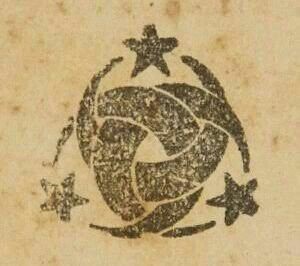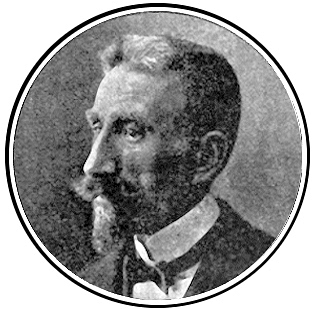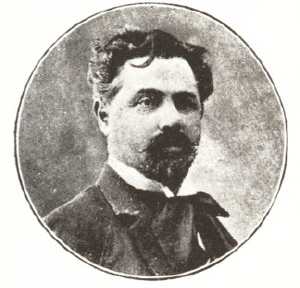|
Sarkis Minassian
Sarkis Minassian (1873 – 1915), also known as Aram Ashod, was an Armenian journalist, writer, political activist, and educator. He became the chief editor of the newspaper '' Hairenik'' in Watertown, Massachusetts. After returning to the Ottoman Empire in 1909, Minassian continued writing in various journals in the city. In 1915, Sarkis Minassian was killed during the Armenian genocide. Life Sarkis Minassian was born in 1873 in the village of Çengiler, near Yalova in northwestern Anatolia. He attained his early education in Bardizag (today Bahçecik, Kocaeli). Thereafter, Minassian moved to Constantinople to continue his education at the Getronagan Armenian High School. After graduating from Getronagan in 1894, Minassian moved to Geneva, Switzerland where he became a staff member of the Armenian newspaper '' Droshak'', the official organ of the Armenian Revolutionary Federation. In 1903, Minassian moved to the United States where he became the managing editor of the Arme ... [...More Info...] [...Related Items...] OR: [Wikipedia] [Google] [Baidu] |
Yalova
Yalova is a market-gardening town located in northwestern Turkey on the eastern coast of the Sea of Marmara. The town has a population of 156,838, while the population of the surrounding Yalova Province is 291,001 . A largely modern town, it is best known for the spa resort at nearby Termal, a popular summer retreat for residents of Istanbul. Regular ferries connect Yalova with Istanbul via the Sea of Marmara. They are operated by İDO. Name The name ''Yalova'' is assumed to be a contraction of ''Yalıova''. ''Yalı'' means 'house at the coast' and ''ova'' means 'plain' in Turkish. History Ancient Yalova The first settlement in the region dates back to the Prehistoric Period, in around 3000 BC. The Hittites ruled the region in the 21st century BC, followed by the Phrygians in the 13th century BC, and then the Greeks in the archaic, classical and Hellenistic eras. The region was conquered by the Romans in 74 BC. After the fall of the Roman Empire, it became part of ... [...More Info...] [...Related Items...] OR: [Wikipedia] [Google] [Baidu] |
Deportation Of Armenian Leaders
The deportation of Armenian intellectuals is conventionally held to mark the beginning of the Armenian genocide. Leaders of the Armenian community in the Ottoman capital of Constantinople (now Istanbul), and later other locations, were arrested and moved to two holding centers near Angora (now Ankara). The order to do so was given by Minister of the Interior Talaat Pasha on 24 April 1915. On that night, the first wave of 235 to 270 Armenian intellectuals of Constantinople were arrested. With the adoption of the Tehcir Law on 29 May 1915, these detainees were later relocated within the Ottoman Empire; most of them were ultimately killed. More than 80 such as Vrtanes Papazian, Aram Andonian, and Komitas survived. The event has been described by historians as a decapitation strike, which was intended to deprive the Armenian population of leadership and a chance for resistance. To commemorate the victims of the Armenian genocide, 24 April is observed as Armenian Genocide Remembranc ... [...More Info...] [...Related Items...] OR: [Wikipedia] [Google] [Baidu] |
1915 Deaths
Events Below, the events of World War I have the "WWI" prefix. January *January – British physicist Sir Joseph Larmor publishes his observations on "The Influence of Local Atmospheric Cooling on Astronomical Refraction". *January 1 ** WWI: British Royal Navy battleship HMS ''Formidable'' is sunk off Lyme Regis, Dorset, England, by an Imperial German Navy U-boat, with the loss of 547 crew. ** Battle of Broken Hill: A train ambush near Broken Hill, New South Wales, Australia, is carried out by two men (claiming to be in support of the Ottoman Empire) who are killed, together with 4 civilians. * January 5 – Joseph E. Carberry sets an altitude record of , carrying Capt. Benjamin Delahauf Foulois as a passenger, in a fixed-wing aircraft. * January 12 ** The United States House of Representatives rejects a proposal to give women the right to vote. ** '' A Fool There Was'' premières in the United States, starring Theda Bara as a ''femme fatale''; she quickly becomes one o ... [...More Info...] [...Related Items...] OR: [Wikipedia] [Google] [Baidu] |
1873 Births
Events January–March * January 1 ** Japan adopts the Gregorian calendar. ** The California Penal Code goes into effect. * January 17 – American Indian Wars: Modoc War: First Battle of the Stronghold – Modoc Indians defeat the United States Army. * February 11 – The Spanish Cortes deposes King Amadeus I, and proclaims the First Spanish Republic. * February 12 ** Emilio Castelar, the former foreign minister, becomes prime minister of the new Spanish Republic. ** The Coinage Act of 1873 in the United States is signed into law by President Ulysses S. Grant; coming into effect on April 1, it ends bimetallism in the U.S., and places the country on the gold standard. * February 20 ** The University of California opens its first medical school in San Francisco. ** British naval officer John Moresby discovers the site of Port Moresby, and claims the land for Britain. * March 3 – Censorship: The United States Congress enacts the Comstock Law, making it ... [...More Info...] [...Related Items...] OR: [Wikipedia] [Google] [Baidu] |
Special Organization (Ottoman Empire)
The Special Organization ( ota, تشکیلات مخصوصه, ''Teşkilât-ı Mahsusa'', or ) was a paramilitary organization in the Ottoman Empire known for its key role in the commission of the Armenian genocide. Originally organized under the Ministry of War, the organization was shifted to answer directly to the ruling party Committee of Union and Progress (CUP) in February 1915. Led by Bahaeddin Şakir and Nazım Bey and formed in early 1914 of tribesmen (especially Circassians and Kurds) as well as more than 10,000 convicted criminals—offered a chance to redeem themselves if they served the state—as a force independent of the regular army that could be used to attack civilians. It was the progenitor of the National Security Service of the Republic of Turkey, which was itself the predecessor of the modern National Intelligence Organization. Origins The exact date of establishment is unclear or disputed. According to some researchers, the organization might have been e ... [...More Info...] [...Related Items...] OR: [Wikipedia] [Google] [Baidu] |
Siverek
Siverek (from hy, Սեւավերակ, lit=black ruins, translit=Sevaverag, ku, Sêwreg) is a city and district in the south-east of Turkey, in Şanlıurfa Province. Population 107,634 (city); 247,000 (district) (2000 census). Siverek is in Şanlıurfa province but closer geographically to the large city of Diyarbakır (approx 83 km). History Siverek was historically known in medieval Arabic as Hisn ar-Ran, which was corrupted into Greek Chasanara ( gr, Χασαναρᾶ) as found in the Escorial Taktikon. The town came under Byzantine control sometime after 956 and by the early 970s had become the seat of a strategos. In the Ottoman Empire period Siverek was within the Diyarbekir vilayet, and it had several Christian settlements. Climate Siverek has a hot-summer Mediterranean climate (Köppen climate classification: ''Csa''). Politics In common with other districts of Şanlıurfa, business and politics in Siverek are strongly influenced, even controlled, by a powerful c ... [...More Info...] [...Related Items...] OR: [Wikipedia] [Google] [Baidu] |
Urfa
Urfa, officially known as Şanlıurfa () and in ancient times as Edessa, is a city in southeastern Turkey and the capital of Şanlıurfa Province. Urfa is situated on a plain about 80 km east of the Euphrates River. Its climate features extremely hot, dry summers and cool, moist winters. About northeast of the city is the famous Neolithic site of Göbekli Tepe, the world's oldest known temple, which was founded in the 10th millennium BC. The area was part of a network of the first human settlements where the agricultural revolution took place. Because of its association with Jewish, Christian, and Islamic history, and a legend according to which it was the hometown of Abraham, Urfa is nicknamed the "City of Prophets." Religion is important in Urfa. The city "has become a center of fundamentalist Islamic beliefs" and "is considered one of the most devoutly religious cities in Turkey". The city is located 30 miles from the Atatürk Dam, at the heart of the Southeast Ana ... [...More Info...] [...Related Items...] OR: [Wikipedia] [Google] [Baidu] |
Gomidas Institute
The Gomidas Institute (GI; hy, ԿԻ) is an independent academic institution "dedicated to modern Armenian and regional studies." Its activities include research, publications and educational programmes. It publishes documents, monographs, memoirs and other works on modern Armenian history and organizes lectures and conferences. The institute was founded in 1992 at the University of Michigan in Ann Arbor. It is based in London and maintains a United States branch in Cleveland. British-Armenian historian Ara Sarafian serves as its executive director. Since 1998, the institute has been publishing a quarterly journal titled ''Armenian Forum'' ( ). The institute is named after Komitas (''Gomidas'' in Western Armenian pronunciation). Noteworthy publications Ottoman/Turkish Armenia and the Armenian genocide * * * * * * * * * * * * * * * * * Russian/Soviet/Post-Soviet Armenia and the Caucasus * * * * * * * * * * Armenian Literature * * * * * Armenian ... [...More Info...] [...Related Items...] OR: [Wikipedia] [Google] [Baidu] |
Nazaret Daghavarian
Nazaret Daghavarian ( hy, Նազարեթ Տաղավարյան, Western Armenian: Նազարէթ Տաղաւարեան, tr, Nazaret Dağavaryan; 1862 in Sebastia, Western Armenia, Ottoman Empire – 1915) was an Ottoman Armenian doctor, agronomist and public activist, and one of the founders of the Armenian General Benevolent Union (AGBU). He was an author of scientific works on medicine, religion and history. Biography He was born as Chaderjian ( tr, Çadırcıyan) in Sebastia and studied in the colleges of Constantinople, then finished at the University of Paris. He was the chief director of the Armenian schools of Sebastia province, then directed the Aramian school and St Savior hospital in Constantinople. Being arrested by the Turkish authorities, he was released after mediation by the French embassy and in 1905 he moved to Cairo, where he worked as a doctor and teacher and participated in the foundation of the AGBU charity organization. In 1908 after the Young Turk revol ... [...More Info...] [...Related Items...] OR: [Wikipedia] [Google] [Baidu] |
Harutiun Jangülian
Harutiun Jangülian ( hy, Յարութիւն Ճանկիւլեան; 1855 – 15 June 1915) was an Armenian historian, political activist, and member of the Armenian National Assembly. He was especially known for his involvement in the Kum Kapu demonstration. He spent six years imprisoned in exile. He returned to Constantinople and continued his political activity after his release. Jangülian was arrested on 24 April 1915, at the beginning of the Armenian genocide, deported, and ultimately executed. Early life Harutiun Jangülian was born to an Armenian family in 1855 in Van, within the Ottoman Empire. At the time, Van was considered one of the centers of the Armenian Revolutionary Movement. He joined the Social Democrat Hunchakian Party while in Van and moved to Constantinople in 1884. There Jangülian met leading political activist Hampartsoum Boyadjian of the Hnchak party. The two eventually became the chief organizers of the Kum Kapu demonstration. Kum Kapu demonstration Toward ... [...More Info...] [...Related Items...] OR: [Wikipedia] [Google] [Baidu] |
Khachatur Malumian
Khachatur Malumian ( hy, Խաչատուր Մալումյան), also known as Edgar Aknuni (''Aknouni or Agnouni''; hy, Էտկար Ակնունի) (1863 in Meghri, Russian Empire – 1915) was an Armenian journalist and political activist. Biography Khachatur Malumian gained his early education at the Nersisyan School in Tiflis. He studied at Geneva University, where he became one of the close friends of Christapor Mikaelian, contributing to his Droshak Journal. In 1907 in Vienna, he was delegated to the ARF IV Conference, then in Paris he organized the General Meeting of opposite Ottoman parties for the reinstatement of the Ottoman Constitution. He welcomed the Young Turk movement and worked in Constantinople (now Istanbul) after 1914. Even when the Ottoman Interior Ministry ordered that the Armenian intellectuals be deported, Aknuni stayed loyal to Talaat, the Interior Minister, saying, "It’s impossible! Talaat probably doesn’t know about it!" [...More Info...] [...Related Items...] OR: [Wikipedia] [Google] [Baidu] |







